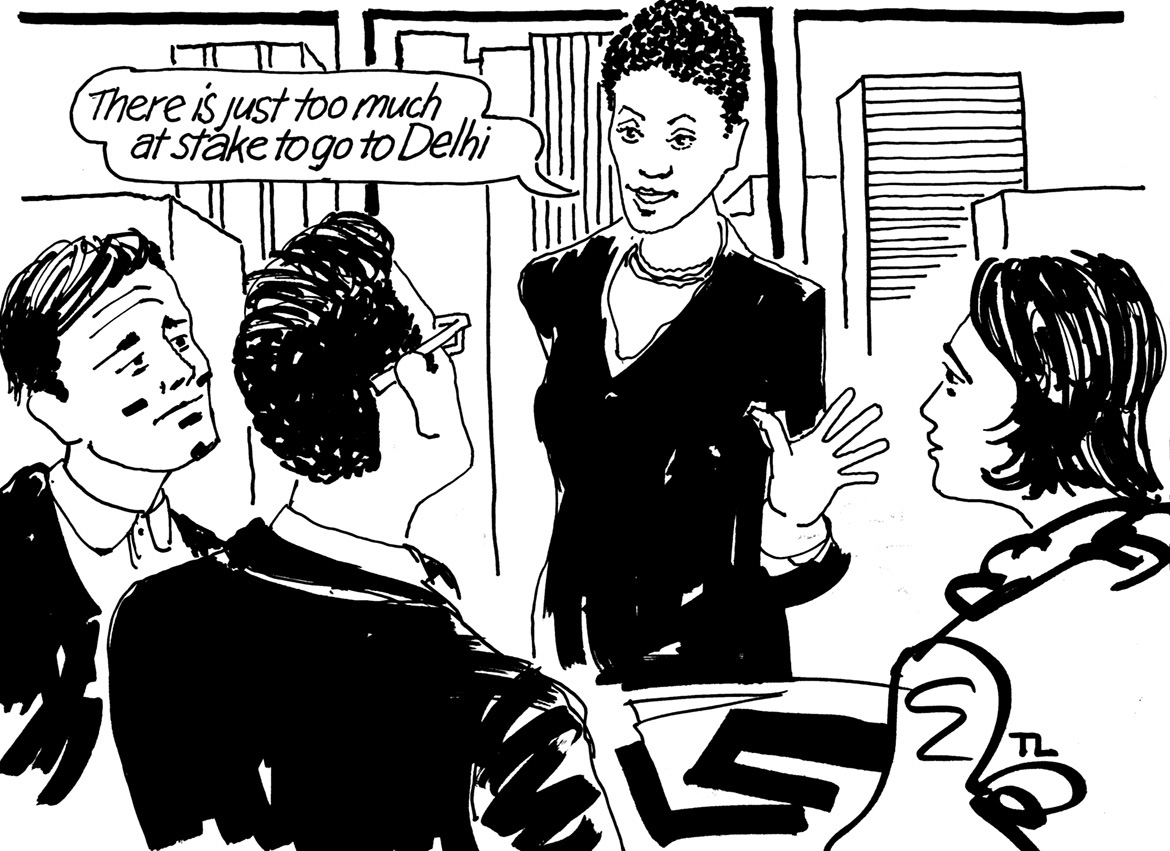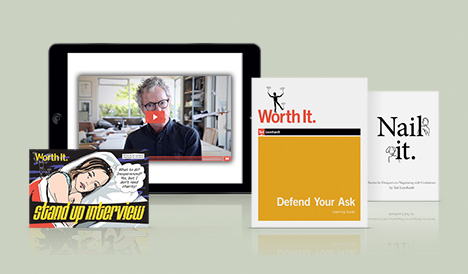Defend Your Ask

Okay, you’ve changed the context and expanded the project significantly. You’ve done it all with the best interests of your client in mind. In the process of making the deal you’ve really gotten to know your client and formed a great working relationship. And just as you’re planning the kick off meeting, you get an email like this:
Hi Kathy,
I’m really sorry to tell you this, but our Purchasing Department has gotten involved. I knew they needed to approve, but I thought the tight schedule would keep them from doing anything.
They’ve found a vendor in Delhi to do the backend on the new website for significantly less.
I don’t think I can do anything about it.
I’m so sorry about this, Kathy.
Matt
Kathy Prepares to Defend Her Ask
Kathy called Matt as soon as she saw the email — her heart pounding in her ears — while she outlined the problems of going offshore. She concluded the call by asked for a meeting with Matt’s team that included Purchasing.
“Matt, you’ve got product launch in six months. You can’t afford to miss that date.”
“Kathy, Purchasing said that the Delhi vendor’s contract guarantees the delivery date. That they will pay a significant penalty if they miss the date.”
Gaining confidence as she warmed to her subject, Kathy went further: “Matt, quality is the real issue. Quality of experience with your early adopters will make or break the product launch. You have only one opportunity to make a first impression. And that requires complete control of the look, feel, and message. It’s impossible to maintain the kind of control we need to succeed with a Delhi vendor.”
Matt: “I know, I know. But the CEO has been really concerned about costs recently and it seems like these procurement guys have all the power around here.”
With that comment Kathy realized that it was an us-against-them situation with Matt and Purchasing. There was her opportunity. She could help them both and turn this around: “Matt, support me in the meeting. In my experience, these guys can change their view, but only if we present a united front.”
After the call, Kathy took a few moments to think about how to separate the facts from the feelings for her client, Matt, and for the Purchasing executive. It calmed her raging anxiety. Then she called her creative director and IT guy, and they got their heads together on how to make the case.
Purchasing
The Purchasing meeting was long and, for Kathy, the detail tedious. With the earlier anxiety past, she actually felt a bit sleepy. “Don’t go to sleep here old girl,” she cautioned herself, “the deal’s not done yet.” Her IT guy was great at showing how he managed the backend. Her creative director underscored that the relationship between creative and code was crucial for a successful result.
Matt had been a bit standoffish at the beginning of the discussion. Clearly, these Purchasing people had his number. He was afraid of them. Well, she couldn’t blame him. He had a family and responsibilities; he needed the job. She’d hoped for a bit more overt support, but expected his lukewarm demeanor.
Then it was Kathy’s turn. She captured the head of Purchasing’s gaze and said, “I know how important cost control is. Especially at this moment — with the product on the way, but not quite ready — I’m sure it’s excruciating. Especially with your personal responsibility for cost control when so much unknown exists.”
Kathy knew that the product, if successful, would guarantee the future for the senior executives involved — and that their future was much more uncertain if the product failed.
She went on with, “and I know that your plan to go to Delhi with the backend is entirely about keeping your costs as low as you can during this critical moment. I also really appreciate your concern and your skills in negotiating these complex backend coding contracts.
“You may not know that my firm was recently involved in the redesign and re-launch of — well I can’t mention their name — but let’s say a West Coast software powerhouse’s biggest product suite. They, too, went to Delhi for their backend to keep costs down. And midway in the process we could see that the offshore coders couldn’t meet the design standards and that look and feel were seriously undermined. After losing two weeks to intense internal debate, our client moved the most vulnerable work back to us, and our stateside team. The Delhi folks are skilled but culturally out of sync with the design. They just can’t see it.
“I asked for this meeting to hopefully avoid the danger of lost time and momentum with your project. Also, I want you to know that we would be happy to help your Delhi group save money and get up to speed on future launches. In my experience there is just too much at stake on this launch to go to Delhi.”
Then Kathy went silent and looked over at her client Matt. He was smiling.
The Purchasing executive asked a few more questions — he did know his stuff, Kathy thought — thanked Kathy, and adjourned the meeting.
The next day Matt called. “You did it Kathy, he called a few of his contacts and corroborated your story. He told me this morning that he appreciated your effort to fill him in and he signed your purchase order.”
The Take Away
Kathy summarized her defense entirely in their best interest. She acknowledged the facts and the feelings of her direct client and Purchasing, individually. And with Purchasing she added emphasis with:
- Empathy: Kathy referred directly to the pressure on Purchasing during this critical time letting him know she understood the difficulty he faced.
- Appreciation: She noted his specific skills and expertise while explaining her concerns.
- Respect: Throughout, her remarks she was respectful and kind. Kathy even found a way to be respectful of her competitor in Delhi.
Even after you’ve worked with a client to define the project scope, there will be other challenges. Often, these include internal pressure to reduce costs. Using your expertise and your empathy, like Kathy did, will help your client understand you have their best interests in mind — and that you’re still the best person for the job.




